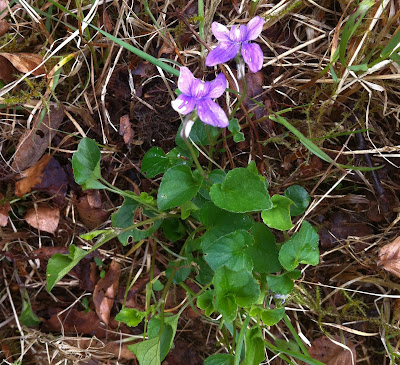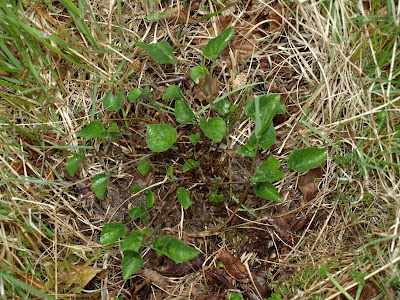Dog violet (Viola canina) is a low growing herbaceous perennial from the Violaceae family. Native to Europe and the British Isles, it is also known as heath dog violet or heath violet. It can be found in meadows, grasslands, hedgerows, woodlands, heath, dunes and fens.
Dog violet has declined in number since the 1950s due mainly to habitat loss, drainage and agricultural improvement, over and under-grazing and possible hybridisation with other Viola species.
Growing methods
Dog violet can be propagated by seed sowing or division. Sow seed in the autumn in a cold frame. When the seedlings are large enough prick them out. Plant them in their final position during the summer months. To divide the plants, wait until the plants have flowered or the autumn. If the divided plants are quite small use individual pots to grow them on and then plant them out the following spring or summer. Otherwise they can simply be placed in their final position.
 |
| Dog violet (V. canina) in flower |
Dog violet prefers acid soils and will grow from 5 - 15 cm in height. Plants produce a pretty pale blue or white flower which is in flower from April to August. It has a longer flowering period than the sweet violet (Viola odorata). The flowers are scentless, generally larger than those of the sweet violet, not only paler in colour, but like most purple flowers, occasionally varying to white.
 |
| Dog violet (V. canina) after flowering |
Plants may vary depending on where they are grown. The leaves are heart-shaped and with serrated edges. They are ordinarily, like the stems, quite smooth, while in the sweet violet we often get them more or less covered with soft hairs. The flowering stems are at first short but lengthen as time goes on.
Other uses
The flowers and leaves are used in herbal medicine.
Raw edible parts
The young leaves and flower buds are edible raw or cooked. They are mucilaginous and will thicken dishes. A tea can be made from the leaves. As a point of interest, the leaves and flowers of all members of the viola genus are generally thought to be edible.

No comments:
Post a Comment